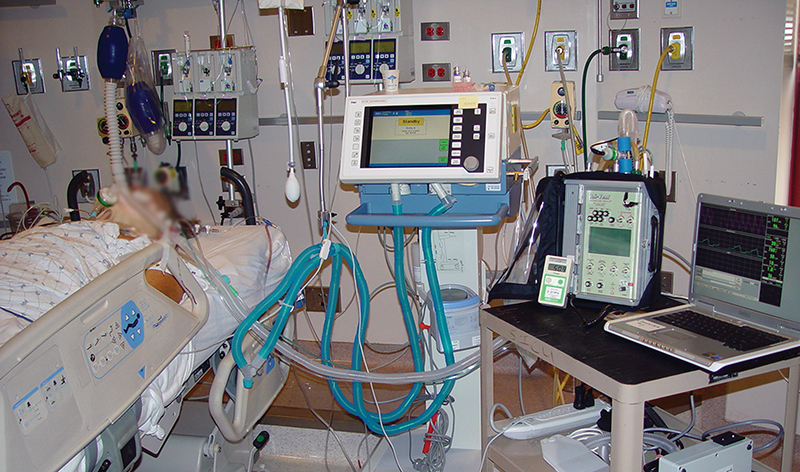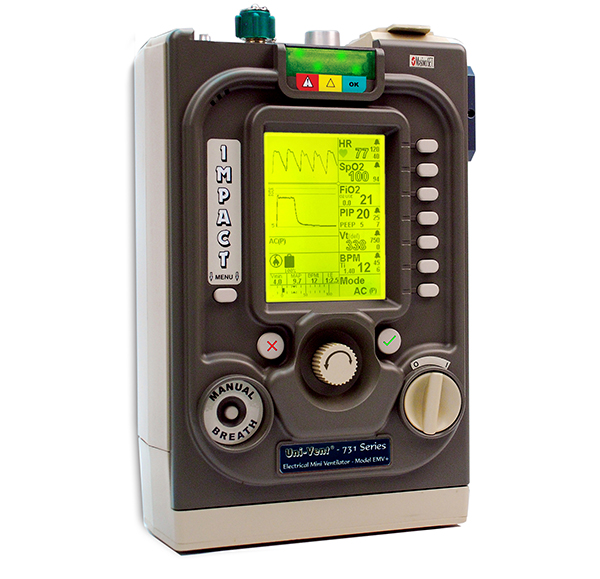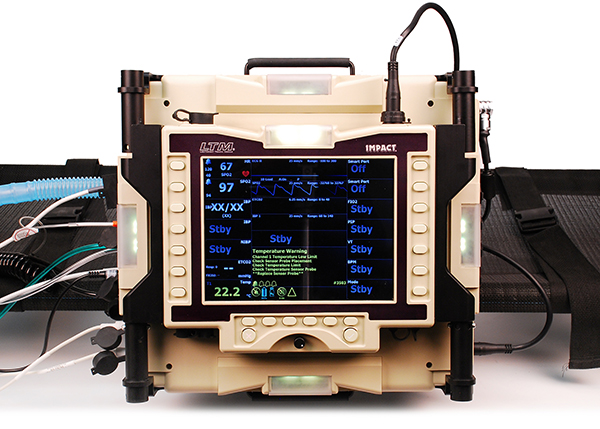
Ventilator Technologies Sustain Critically Injured Patients
NASA Technology
Consider this scenario: A soldier has been critically wounded in a sudden firefight in a remote region of Afghanistan. The soldier’s comrades attend to him and radio for help, but the soldier needs immediate medical expertise and treatment that is currently miles away.
The connection between medical support for soldiers on the battlefield and astronauts in space may not be immediately obvious. But when it comes to providing adequate critical care, “NASA and the military have very similar operational challenges,” says Shannon Melton of NASA contractor Wyle Integrated Science and Engineering. Melton works within Johnson Space Center’s Space Medicine Division, which supports astronaut crew health before, during, and after flight.
“In space, we have a limited number of care providers, and those providers are not always clinicians with extensive medical training. We have limited room to provide care, limited consumables, and our environment is not like that of a hospital,” she says.
The Space Medicine Division’s Advanced Projects Group works on combining the expertise of both clinicians and engineers to develop new capabilities that address the challenges of medical support in space, including providing care to distant patients. This field, called telemedicine, blends advanced communications practices and technologies with innovative medical devices and techniques to allow caregivers with limited or no medical experience to support a patient’s needs.
“NASA, just by its nature, has been doing remote medicine since the beginning of the Space Program,” says Melton, an engineer in the Advanced Projects Group.
Since part of NASA’s mandate is to transfer the results of its technological innovation for the benefit of the public, the Agency has worked with doctors and private industry to find ways to apply the benefits of space medicine on Earth. In one such case, a NASA partnership has resulted in new technologies that may improve the quality of emergency medicine for wounded soldiers on the battlefield and regular civilians.
Partnership
Impact Instrumentation Inc. of West Caldwell, New Jersey, is an innovator and manufacturer of respiratory care products and instrumentation for military and civil emergency medicine. Recognizing a common interest in advancing critical care capabilities and the potential for mutual benefit from a sharing of resources, NASA and Impact entered into a Space Act Agreement (SAA).
“There was a common vision of what would be needed for an advanced healthcare system for the military as well as for a space station or deep space mission,” says George Beck, an engineer and former head of critical care development at Johnson who is now vice president of engineering and research for Impact. One project under the SAA focused on adapting Impact’s Model 754 medical ventilator for use in space by making it a remotely controlled device. (A medical ventilator mechanically moves air and oxygen in and out of the lungs of patients who are unable to breathe effectively on their own.) Impact used the resulting Model 754-AP ventilator to develop closed-loop capabilities for the device, leading to clinical trials of a ventilator that could operate itself.
“The way forward with space medicine is not just smaller devices but also smarter devices that run themselves in the absence of a skilled care provider,” says Beck.
Benefits
Fully automated ventilators are still a technology for the future, but Impact’s work developing the Model 754-AP led to the company’s next generation ventilator technology: the Uni-Vent 731 Series of ventilators (which includes the EMV+ and Eagle II ventilators) for prehospital treatment and transport and in the hospital: intensive care units, emergency rooms and intrahospital transport. The 731 Series ventilators combine small size and energy efficiency with ease-of-use features designed for operators with minimal mechanical ventilation experience in any environment. The ventilators’ Smart Help display provides prompts to guide the caregiver in managing the patient and stabilizing a patient’s blood oxygen saturation and heart rate. A comprehensive alarm system and altitude compensation capabilities are among the other features that make Impact’s ventilators suitable for use just about anywhere, according to Beck.
“Our equipment is used on both polar icecaps and by militaries around the world in unique environments,” he says.
Also under the SAA and in conjunction with military funding, Impact, with support from NASA, is developing a system that could provide comprehensive medical care to patients far-removed from the benefits of a hospital—whether in space, on the battlefield, onboard a rescue helicopter, or in a mass casualty event field hospital. The Lightweight Trauma Module (LTM) combines an array of medical technology into a single device about the size of a briefcase.
“To date, most critical care transport systems use an aggregation of individual devices,” Beck says. These devices include ventilators, heart monitors, and IV pumps that have their own screens, power supplies, and operating systems. “These levels of redundancy lead to higher mass, higher volume, and higher power consumption. What the LTM does is take all of those components and put them into a highly portable 30-pound box,” says Beck.
The Advanced Project Group at NASA worked with Impact to design and produce multiple prototype iterations of the LTM. The result is a state-of-the-art device suitable for use in all environments and operated with minimal training. Impact recently delivered two LTMs to the U.S. military for initial testing, and through a grant from the NASA-funded National Space Biomedical Research Institute, Impact and 10Blade Inc. of Acton, Massachusetts, are integrating the LTM with 10Blade’s iRevive medical software.
The iRevive technology uses the information gathered by the LTM and organizes it into a patient care plan. It also compiles the data and provides it in an efficient, medically relevant format to remote doctors, who can use the information to help guide the caregiver. The result, Beck says, is a common platform to monitor both the patient and the therapeutic intervention. Documentation of the data produced by the LTM, whether it is the patient’s condition during transport and at arrival or trending vital signs and administered treatments, provides caregivers a unique opportunity to assess patient status and treatment options on an easy-to-use interface. And since the patient data is efficiently organized and formatted, patient data can be sent ahead to allow receiving caregivers time to review critical care information and continue the patient treatment plan upon arrival.
“For prehospital care and critical care transport inside and outside the hospital, the LTM is going to be the way forward,” Beck states.
Impact®, Uni-Vent®, EMV+®, and LTM® are registered trademarks of Impact Instrumentation Inc.
Eagle II™ and Smart Help™ are trademarks of Impact Instrumentation Inc.
iRevive® is a registered trademark of 10Blade Inc

Impact’s NASA work led to the company’s next generation medical ventilators, including the EMV+.

Impact is now working with NASA to advance emergency medicine even further with the development of the Lightweight Trauma Module.

Impact Instrumentation Inc.’s 754-AP medical ventilator, on the cart and next to the laptop in the right side of the image, is tested in a clinical trial. The technology was developed through a NASA partnership.













